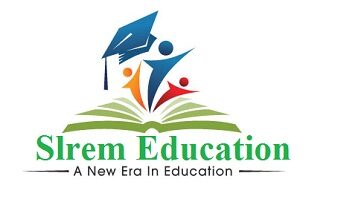Thailand, often celebrated for its rich culture, vibrant traditions, and breathtaking landscapes, faces a pivotal moment in its educational journey. As the nation strives to establish itself as a knowledge-based economy, it must overcome significant challenges in its education system. These challenges, rooted in historical, socio-economic, and systemic factors, require innovative strategies and collective efforts to ensure a brighter future for Thai students. If you are an educator who has completed Special Educational Courses in Thailand, you need to be aware of the critical educational issues Thailand faces and explore potential pathways to address them.
The State of Education in Thailand
Thailand’s educational system is at a turning point, and decisions made now will affect generations to come. We explore the difficulties, hopes, and goals of Thailand’s educational system, acknowledging that a country’s quest for knowledge is its greatest strength in times of hardship. Thailand’s education system has undergone significant transformation over the past few decades.
Government initiatives, such as the introduction of free basic education and increased investments in school infrastructure, have improved access to education. However, the system still struggles with quality and equity issues that hinder its ability to produce globally competitive graduates.
According to the Programme for International Student Assessment (PISA), Thai students consistently rank below the global average in reading, mathematics, and science. This performance gap underscores systemic inefficiencies and highlights areas requiring urgent attention.
Challenges Facing Thailand’s Education System
Here are a few challenges faced by Thailand’s educational system:
1. Inequality in Access to Quality Education
Educational inequality is one of the most pressing issues in Thailand. Disparities in the distribution and inefficiency of funding across Thai schools have resulted in a drop in reading proficiency and a halt in math and science results, according to a World Bank report. The study also reveals that underprivileged schools, private schools that get over half of their money from the government, and rural schools made very little investment in essential financial, human, and digital learning tools.
Students in urban areas generally have access to better-equipped schools, highly qualified teachers, and advanced learning resources. In contrast, rural schools often face resource shortages, inadequate infrastructure, and a lack of trained educators. This urban-rural divide perpetuates cycles of poverty and limits opportunities for students from disadvantaged backgrounds.
Inequality between rural and urban regions is another major issue. A major disparity in the quality of education is caused by the absence of basic facilities, trained instructors, and educational resources in rural regions. Other issues that ethnic minority populations deal with include language barriers and limited access to quality education.
2. Teacher Quality and Training
Teachers play a pivotal role in shaping students’ academic and personal growth. In Thailand, however, there is a notable disparity in teacher quality, particularly in rural areas. Many teachers lack adequate training in modern pedagogical techniques and struggle to keep pace with technological advancements. Additionally, the heavy administrative workload on teachers leaves them with limited time for lesson planning and student engagement.
The quality of instruction in classrooms is directly impacted by a lack of professional development opportunities and teacher training. There are still gaps in the quality of education between urban and rural communities, and pupils in rural areas have less access to resources and trained instructors.
Traditional teaching approaches continue to develop students’ critical thinking abilities and level of involvement. It is now more important than ever to prioritize practical skills, critical thinking, and holistic development. Thailand’s educational system is at a turning point, and the country’s success abroad is largely dependent on the quality of its education.
3. Curriculum Relevance and Language Barriers
The traditional emphasis on rote learning over critical thinking and problem-solving skills is a significant hurdle in Thailand’s education system. The current curriculum often prioritizes memorization of facts over fostering creativity, analytical skills, and innovation. This approach leaves students ill-prepared for the demands of a rapidly changing global economy.
Thailand’s linguistic diversity presents unique challenges in education. While Thai is the official language of instruction, students from ethnic minority communities often struggle to adapt, as they grow up speaking different native languages. This language barrier affects their ability to grasp fundamental concepts, leading to lower academic performance and higher dropout rates.
4. Teacher Shortage
Thailand is having a difficult time giving its pupils a high-quality education, particularly in rural regions where there aren’t enough competent instructors. The lack of teachers in Thailand, especially in rural regions, is highlighted in a Thai PBS World broadcast. The northeastern part of Thailand, where schools find it difficult to recruit and retain skilled teachers, is where the shortfall is most acute, according to the research. This has led to unequal access to high-quality education, which disadvantages pupils in rural regions.
According to the study, student learning would be greatly enhanced by addressing both the amount and quality of teacher shortages, with lower-performing schools experiencing the greatest effects. Therefore, if Thailand is serious about addressing the high disparity in educational performance between socioeconomic groups and the widespread low quality of education, then improving the quality of teachers and addressing the severe teacher shortages, particularly for a large number of small rural schools, should be at the center of Thailand’s reform initiatives.
Navigating the Path Forward: Recommendations and Solutions
To address these challenges, Thailand must adopt a multi-faceted approach that emphasizes inclusivity, innovation, and adaptability.
Below are key recommendations to reform the education system and ensure it meets the needs of the 21st century:
- Promoting Equity in Education
Efforts to bridge the urban-rural divide should focus on allocating resources to underserved schools. This includes investing in infrastructure, providing teacher training programs, and offering scholarships to students from disadvantaged backgrounds. Public-private partnerships can play a crucial role in funding and implementing these initiatives.
- Enhancing Teacher Training and Professional Development
Teachers must be equipped with the skills and knowledge to deliver high-quality education. Continuous professional development programs, workshops on modern teaching methodologies, and access to digital tools can empower teachers to create engaging and effective learning environments. Additionally, reducing administrative burdens on teachers will allow them to focus on their primary role—teaching.
- Revamping the Curriculum
Thailand’s curriculum needs to shift from rote learning to fostering critical thinking, creativity, and problem-solving skills. Incorporating project-based learning, case studies, and interdisciplinary approaches can make education more relevant and engaging. Collaboration with industry leaders can also ensure that the curriculum aligns with labor market demands.
- Addressing Language Barriers
Introducing bilingual or multilingual education programs can help students from ethnic minority communities overcome language challenges. Training teachers in culturally responsive pedagogy and developing learning materials in native languages can further support these students’ academic success.
- Bridging the Digital Divide
To integrate technology into education, the government must prioritize improving internet connectivity and providing digital devices to schools in remote areas. Partnerships with technology companies can facilitate the development of affordable e-learning platforms and resources. Digital literacy programs for both students and teachers are also essential to maximize the benefits of technology.
- Reducing Reliance on Standardized Testing
Reforming the assessment system to include diverse evaluation methods, such as project work, presentations, and collaborative activities, can promote holistic student development. These alternative assessments encourage creativity, teamwork, and real-world problem-solving skills, making education more meaningful and impactful.
Bottom Line
Thailand’s education system stands at a crossroads, with immense potential to transform and adapt to the challenges of the 21st century. Achieving these goals requires collaboration, innovation, and a shared vision for a brighter future. With the right strategies and determination and hiring qualified teachers with SEN courses in Thailand, the country can overcome its educational challenges and pave the way for a more equitable and prosperous society.






